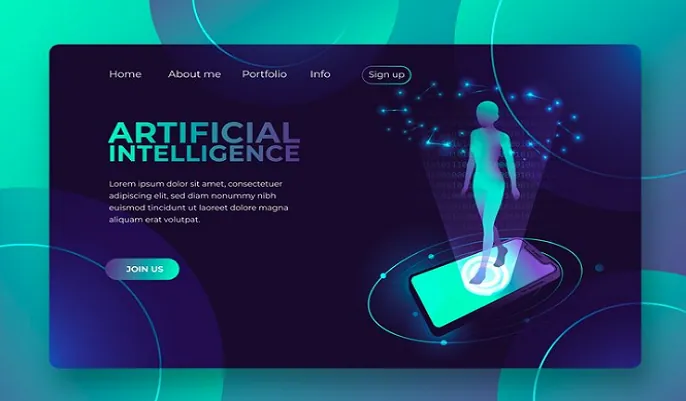Artificial Intelligence and Advertising
The advertising industry is undergoing a seismic shift, driven by the rise of Artificial Intelligence (AI). With its ability to analyse vast amounts of data and generate insights, AI is revolutionizing the way brands interact with consumers, optimize their ad campaigns, and allocate their advertising budgets. This blog post delves into how AI in advertising is transforming the landscape of ad campaigns, enhancing targeting capabilities, and optimizing ad spending.
Understanding AI in Advertising
What is AI Advertising?
AI advertisingrefers to the application of artificial intelligence technologies and algorithms to enhance the efficiency and effectiveness of advertising campaigns. AI can automate tasks, analyse consumer behaviour, personalize content, and predict outcomes, making it an invaluable tool for advertisers seeking to improve their return on investment (ROI).
The Emergence of AI in Advertising
The emergence of AI in advertising can be traced back to the increasing volume of data generated by digital interactions. As consumers engage with brands across various platforms, vast amounts of data are created. Traditional advertising methods struggled to keep pace with this data, leading to inefficiencies and missed opportunities. Enter AI: with its ability to analyse large datasets quickly and accurately, AI enables advertisers to make data-driven decisions, enhancing campaign performance and consumer engagement.
How AI is Transforming Advertising Campaigns
1. Enhanced Targeting Capabilities
One of the most significant advantages of AI in advertising is its ability to improve targeting capabilities. Targeted advertising allows brands to reach the right audience with the right message at the right time, resulting in higher engagement rates and conversion rates.
Predictive Analytics
AI-powered predictive analytics can forecast consumer behaviour based on historical data. By analysing past interactions, AI algorithms can identify patterns and trends that help advertisers anticipate future actions. For instance, predictive analytics can inform brands about which products a consumer is likely to purchase next, allowing them to deliver personalized recommendations.
Audience Segmentation
AI can automatically segment audiences based on various criteria, including demographics, interests, and behaviours. This segmentation enables advertisers to tailor their messaging to specific groups, increasing the relevance of their campaigns. For example, a clothing retailer might use AI to create targeted ads for different segments, such as young adults, parents, or professionals, ensuring that each group receives messaging that resonates with them.
2. Personalization at Scale
In today’s digital landscape, consumers expect personalized experiences. AI enables advertisers to create tailored content that speaks to individual preferences, enhancing the overall consumer experience.
Dynamic Content Creation
AI can generate dynamic ad content that adapts to the viewer's preferences and behaviour. For example, programmatic advertising uses AI algorithms to serve different ad creatives based on the user’s profile, such as location, browsing history, and previous interactions with the brand. This level of personalization increases the chances of capturing the viewer’s attention and driving conversions.
Personalized Recommendations
AI-powered recommendation engines analyse user behaviour and preferences to provide personalized product recommendations. Platforms like Amazon and Netflix leverage AI to suggest products or content based on user interactions, enhancing user engagement and increasing sales. For advertisers, integrating similar AI-driven recommendation systems can lead to more effective campaigns that resonate with consumers.
3. Optimizing Ad Spend
AI can optimize ad spend by ensuring that advertising budgets are allocated efficiently. By analysing performance data in real-time, AI algorithms can make data-driven decisions to maximize ROI.
Real-Time Bidding
In programmatic advertising, AI facilitates real-time bidding (RTB) for ad placements. Advertisers can set parameters for their campaigns, and AI algorithms automatically bid on ad spaces based on predefined criteria. This process ensures that advertisers get the best possible ad placements while minimizing costs. As a result, brands can achieve better results without overspending on ad placements.
Performance Analysis and Adjustment
AI tools can analyse campaign performance in real-time, allowing advertisers to make immediate adjustments. For instance, if an ad is underperforming, AI can suggest modifications to the targeting criteria or ad creative to improve results. This agile approach to advertising ensures that brands can respond quickly to changing market conditions and consumer preferences.
4. Enhancing Creative Development
AI is not just about data analysis; it also plays a role in enhancing creative development. By providing insights and recommendations, AI can help advertisers create more effective ad content.
AI-Driven Design Tools
AI graphic design tools, such as Canva and Adobe Sensei, can automate the design process, making it easier for marketers to create visually appealing ads. These tools can generate design templates, suggest layouts, and even recommend colour schemes based on current trends. By streamlining the creative process, AI allows advertisers to focus on strategic messaging and campaign objectives.
Content Generation
AI can assist in content generation by analysing successful ad copy and identifying key elements that resonate with audiences. Tools like Copy.ai and Jasper leverage AI algorithms to generate copy that aligns with brand messaging and targets specific audiences. By automating content creation, advertisers can save time and resources while maintaining high-quality messaging.
5. Improving Measurement and Analytics
Measuring the effectiveness of advertising campaigns is crucial for ongoing optimization. AI provides advanced analytics capabilities that help advertisers gain deeper insights into campaign performance.
Advanced Metrics and Reporting
AI-powered analytics tools can track a wide range of metrics, from impressions and clicks to conversions and customer lifetime value. These tools can analyse data in real-time, providing advertisers with detailed reports on campaign performance. By understanding which ads perform best and why, brands can refine their strategies for future campaigns.
Attribution Modelling
Attribution modelling helps advertisers understand which marketing channels contribute to conversions. AI can analyse consumer journeys across multiple touchpoints, providing insights into how different channels influence purchase decisions. This data allows brands to allocate their budgets effectively and invest in the channels that drive the most value.
The Role of AI in Advertising Education
As AI continues to reshape the advertising landscape, it is crucial for marketing professionals to stay informed about the latest trends and technologies. Online colleges, such as Oxford Home Study College (OHSC), offer a variety of AI in advertising courses that equip students with the skills needed to thrive in the industry.
1. Learning AI Tools and Techniques
AI advertising courses cover essential tools and techniques, enabling students to understand how to leverage AI for effective advertising campaigns. Topics may include programmatic advertising, predictive analytics, and content generation, preparing students for roles in the evolving advertising landscape.
2. Understanding Consumer Behaviour
Courses focusing on AI in advertising also emphasize the importance of understanding consumer behaviour. Students learn how to analyse data, segment audiences, and create personalized experiences, ensuring that they can develop campaigns that resonate with target audiences.
3. Preparing for Future Opportunities
The advertising industry is continually evolving, with new opportunities emerging as AI technology advances. By gaining a solid understanding of AI in advertising, students can position themselves as competitive candidates in the job market. Online courses, such as those offered by OHSC, provide valuable insights and practical skills that enhance employability.
Challenges and Limitations of AI in Advertising
While AI offers numerous benefits to the advertising industry, it also presents challenges and limitations that must be considered.
1. Data Privacy Concerns
As AI relies on data to function effectively, data privacy is a significant concern. Advertisers must navigate complex regulations surrounding consumer data, such as the General Data Protection Regulation (GDPR) and the California Consumer Privacy Act (CCPA). Failure to comply with these regulations can result in legal repercussions and damage to brand reputation.
2. Algorithmic Bias
AI algorithms can inadvertently perpetuate biases present in the data they are trained on. For instance, if historical data reflects certain biases, AI-generated recommendations may reinforce those biases in advertising campaigns. Advertisers must be vigilant in ensuring that their AI systems are designed to promote fairness and inclusivity.
3. Over-Reliance on Technology
While AI can enhance advertising efforts, there is a risk of over-reliance on technology. Advertisers must strike a balance between leveraging AI capabilities and maintaining human creativity and intuition. Effective advertising requires understanding consumer emotions and motivations, which AI may not fully grasp.
The Future of AI in Advertising
The future of AI in advertising holds exciting possibilities as technology continues to evolve. Here are some predictions for the future of AI in the advertising industry:
1. Greater Personalization
As AI technology advances, the ability to create highly personalized advertising experiences will become even more sophisticated. Brands will be able to deliver hyper-targeted messages that resonate with individual consumers, enhancing engagement and conversion rates.
2. Enhanced Creative Collaboration
The future of advertising will likely see more collaboration between humans and AI in the creative process. AI tools will assist marketers in generating ideas and insights, allowing them to develop more innovative campaigns. This partnership will push the boundaries of creativity and result in compelling advertising experiences.
3. Integration of Augmented and Virtual Reality
The integration of AI with augmented reality (AR) and virtual reality (VR) will create immersive advertising experiences. Brands will leverage AI to analyse user interactions in AR and VR environments, enabling them to create tailored content that enhances the overall consumer experience.
4. Evolving Education and Training
As the advertising landscape continues to change, education and training will evolve to keep pace with new technologies. Online courses, such as those offered by OHSC, will play a vital role in equipping marketing professionals with the skills needed to navigate the AI-driven advertising landscape.
Conclusion
AI in advertising is revolutionizing the way brands connect with consumers and optimize their campaigns. By enhancing targeting capabilities, personalizing content, and optimizing ad spend, AI empowers advertisers to create more effective and engaging campaigns.
While challenges such as data privacy concerns and algorithmic bias exist, the benefits of AI in advertising far outweigh the drawbacks. The future of advertising will be shaped by continued advancements in AI technology, leading to greater personalization, enhanced creativity, and more immersive advertising experiences.
As the advertising industry continues to evolve, it is essential for marketing professionals to stay informed and adapt to these changes. Online courses, such as those offered by Oxford Home Study College, provide valuable insights and skills that prepare students for success in the dynamic world of AI advertising.
By embracing the transformative power of AI, advertisers can unlock new opportunities, drive better results, and ultimately create advertising campaigns that resonate with consumers in a meaningful way.

